The strategic convergence point after 40 years of national renovation is bringing a historic opportunity to bring the country into an era of development, an era of national advancement; at the same time, it also poses an urgent requirement to resolutely carry out the revolution to build a truly streamlined political system that operates effectively and efficiently, meeting the requirements and tasks in the new revolutionary period.
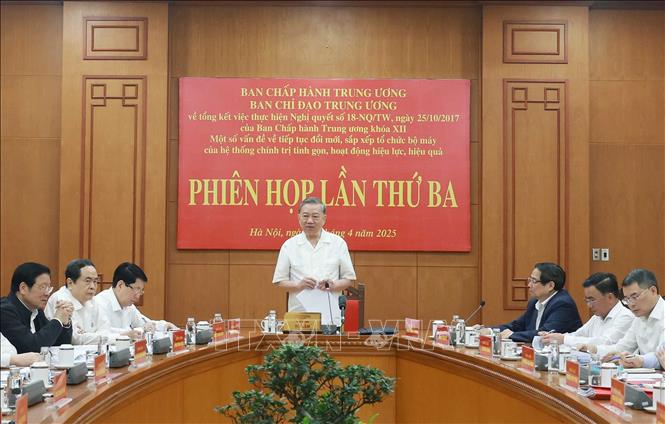
In mid-April, concluding the 3rd meeting of the Central Steering Committee on summarizing Resolution No. 18-NQ/TW (Central Steering Committee), General Secretary To Lam emphasized that the revolution to streamline the organizational apparatus of the political system has been taking place very urgently, drastically, with high consensus throughout the Party and with the support of the people. The results achieved in the past time show that the policies and decisions of the Central Executive Committee, the Politburo, and the Secretariat are very correct, very accurate, and in line with the Party's will and the people's will.
Organizing to collect public opinions on amending the Constitution
The 9th session of the 15th National Assembly is scheduled to open on May 5. The National Assembly will consider amending and supplementing a number of articles of the 2013 Constitution and amending laws related to amending the Constitution to serve the streamlining of the apparatus in the spirit of Resolution 18-NQ/TW.
According to Article 120 of the 2013 Constitution on amending the Constitution, after the National Assembly decides to amend the Constitution when at least two-thirds of the total number of National Assembly deputies vote in favor, the National Assembly will establish a Constitutional Drafting Committee and the Constitutional Drafting Committee will draft the Constitution and then organize to collect public opinions.
Thus, right from the beginning of the 9th Session, the National Assembly will carry out this work.
At the National Conference to disseminate and implement Resolution 11 of the Central Committee held on April 16, National Assembly Chairman Tran Thanh Man said that the scope of this amendment and supplement to the Constitution focuses on two groups of contents.
One is the provisions of the 2013 Constitution related to the Vietnam Fatherland Front and socio-political organizations (concentrated in Articles 9 and 10), to meet the requirements of streamlining the organizational apparatus, promoting the role, responsibility, and proactiveness of the Vietnam Fatherland Front, the role of gathering classes and strata, strongly oriented towards residential areas, close to the people, to each household.
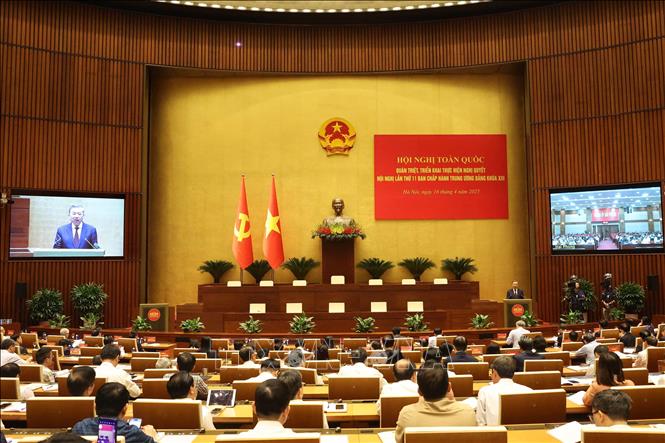
Second, the provisions in Chapter 9 of the 2013 Constitution to implement the two-level local government organization model.
According to regulations, when the National Assembly's resolution on amending and supplementing a number of articles of the 2013 Constitution is considered and voted on, the competent authority will immediately organize to collect public opinions on the amendment of the Constitution.
Also at the National Conference to disseminate and implement Resolution 11 of the Central Committee on organizing the collection of public opinions on amending the Constitution, Politburo member and National Assembly Chairman Tran Thanh Man requested relevant agencies to conduct this work in a scientific, democratic, substantive, public, and transparent manner...
Key tasks in May 2025
Plan No. 47-KH/BCĐ on the implementation of the arrangement and merger of provincial and communal administrative units and the organization of the two-level local government system (issued on April 14, 2025) of the Central Steering Committee on summarizing Resolution No. 18-NQ/TW (Plan No. 47) clearly stated the key tasks expected to be completed at specific times in 2025 and 2026.
Particularly in May 2025, according to Plan No. 47, the central and local levels across the country will continue to carry out key tasks.
Specifically, the Government Party Committee leads and directs the issuance of regulations and guidelines on the division of tasks, powers, and administrative procedures from the district level to the provincial level and down to the commune level, and resolves matters related to organizations and individuals before, during, and after the arrangement of administrative units, implementing the 2-level local government organization model; on the regime, policies, salaries, and responsibility allowances for commune-level cadres, civil servants, and public employees after the arrangement to ensure balance and conformity with the policy of saving and reducing budget expenditures for the apparatus; guidance on the arrangement, assignment, and implementation of regimes and policies for cadres and non-professional workers at the commune level when implementing the 2-level local government; on the application of specific regimes and policies for administrative units after the arrangement (highlands, border areas, islands, etc.). Regimes and policies for cadres, civil servants, public employees, and workers affected when implementing the arrangement of administrative units.
Along with that, the Government Party Committee leads and directs the proposal to amend, supplement, and promulgate laws and resolutions regulating the implementation of merging provincial-level administrative units, not organizing district-level units, merging commune-level units, organizing two-level local governments, reorganizing the inspection system, etc.; state management, national governance, and social management, clearly defining the tasks, authorities, and responsibilities of the central level (National Assembly, National Assembly Standing Committee, Government, ministries, central branches), provincial-level governments, and commune-level governments; promoting decentralization and delegation of power in each sector and field, such as Justice, finance, budget, tax, investment, business, trade, tourism, construction, traffic, transportation, irrigation, land, resources, environment, agriculture, education, training, health, culture, society, insurance, labor, employment, etc., submitting them to the National Assembly and the National Assembly Standing Committee for approval; Report to the Politburo the contents within its authority.
Plan No. 147 clearly stipulates the tasks, authority and responsibilities of the Central level, which are to build institutions, strategies, planning, plans, play the role of creation, macro management and inspection and supervision. The provincial level completes the organizational model and operation of the provincial government in the direction of improving the capacity to organize and implement tasks, "locally decide, locally do, locally take responsibility" to ensure efficiency, effectiveness and efficiency. The communal level shifts from the "management government" model to the "service government" model, taking the people as the center, proactively grasping and solving arising issues and issues related to individuals and organizations right from the grassroots level.
Before May 31, the Government Party Committee will lead and direct the research, determine the roadmap, and guide the arrangement and reorganization of villages and residential groups in a streamlined manner, enhance self-management, and directly serve the lives of the community at the grassroots level.
Also in May 2025, the Party Committee of the Vietnam Fatherland Front and central mass organizations consulted and proposed amendments and supplements to Party documents and relevant legal regulations to implement the policy of arranging socio-political organizations and mass associations assigned by the Party and State to be under the Central Committee of the Vietnam Fatherland Front.
The Central Organizing Committee presides over and coordinates with relevant agencies to preside over and advise on a number of specific issues in implementing the Party Charter (replacing Instruction No. 01-HD/TW, dated September 28, 2021 of the Secretariat).
Regarding the work of perfecting legal institutions, according to Plan No. 47, in early May 2025, the Central Military Commission led and directed the proposal to amend and supplement laws drafted by the Ministry of National Defense.
The Party Committee of the Public Security leads and directs the proposal to amend and supplement the Law on the People's Public Security, the Law on the Execution of Criminal Judgments, and the Law on the Organization of Criminal Investigation Agencies; presides over and coordinates with the Central Organization Committee to advise the Politburo to issue regulations on party organization in the People's Public Security (supplementing and amending Regulation No. 192-QD/TW, dated May 18, 2019).
The Party Committee of the Supreme People's Court and the Party Committee of the Supreme People's Procuracy proposed to amend and supplement the Law on Organization of People's Courts, the Law on Organization of People's Procuracies, the Criminal Procedure Code, the Civil Procedure Code, the Administrative Procedure Law and a number of other relevant laws, ordinances and resolutions; the coordination mechanism between the People's Court, the People's Procuracy and the investigation agencies in litigation activities.
Basically, localities have completed the project of commune-level arrangement and province merger.
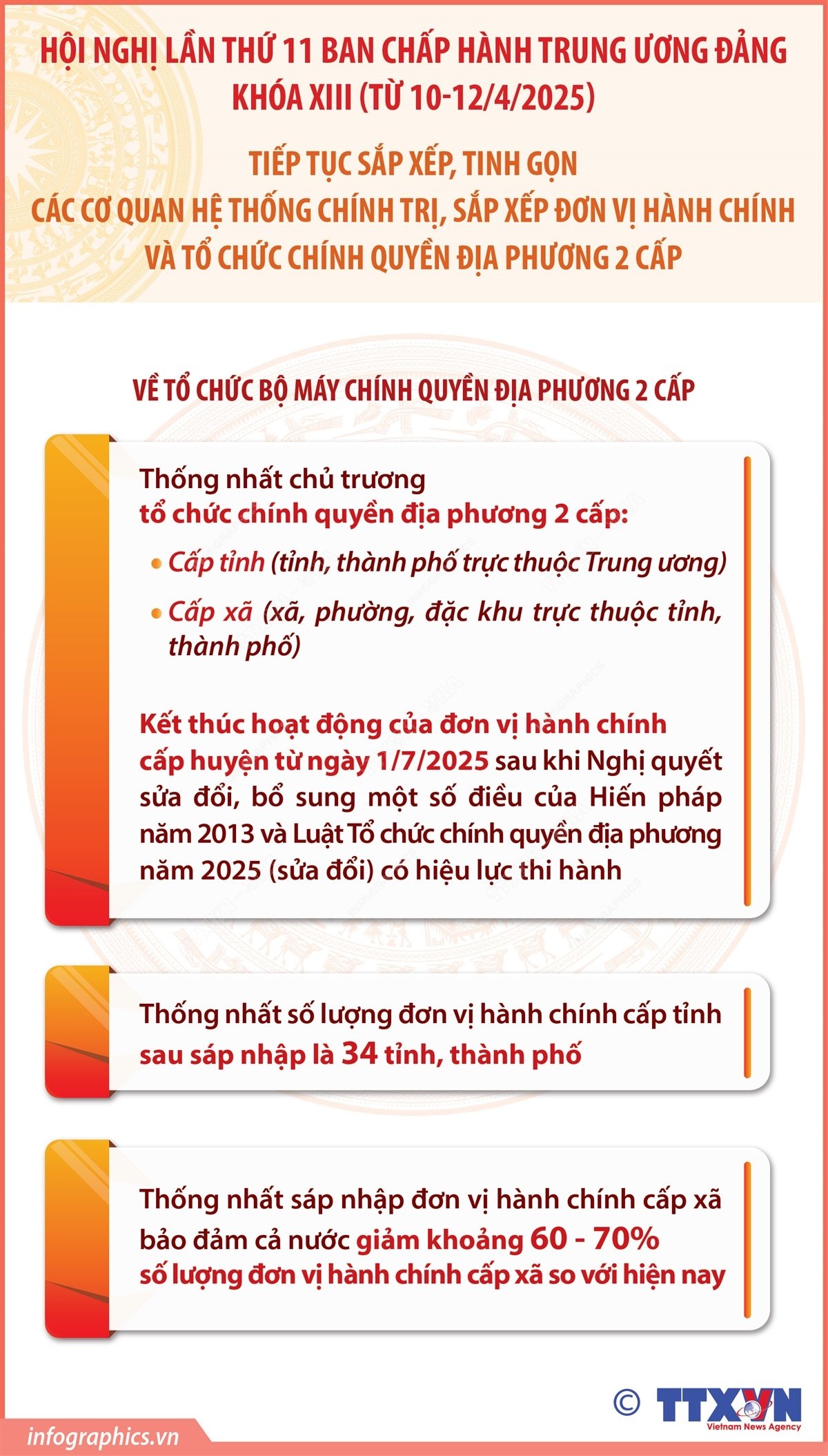
According to Plan No. 47, before May 1, 2025, the provincial and municipal Party Committees directly under the Central Government must complete the project to merge commune-level administrative units, not organize at the district level; collect public opinions, complete the project (according to regulations and instructions of the National Assembly, the National Assembly Standing Committee, the Government, central ministries and branches), and report to the Government (according to the Government's instructions).
For provincial and municipal Party Committees directly under the Central Government, it is necessary to arrange provincial-level administrative units to lead and direct (before the arrangement): Before May 1, 2025, the provincial and municipal Party Committees that are identified as the political and administrative centers of the provincial-level administrative units after the arrangement shall preside over and closely coordinate with the provincial and municipal Party Committees (which have been approved by the Central Executive Committee in principle for merger) to develop a project to merge provincial-level administrative units; collect public opinions, complete the project, and submit it to the Government (according to the Government's instructions).
Resolutely directing, operating and implementing the Central Government's policy on the arrangement of administrative units at all levels and the organization of 2-level local governments, Thai Nguyen province has completed the contents of the Project on the arrangement of commune-level administrative units of Thai Nguyen province in 2025; Project on the arrangement and merger of Bac Kan province and Thai Nguyen province. The province submitted the documents of the 2 Projects to the Central Government on April 24, 2025 - the first province in the country to complete and submit them to the Central Government.
Regarding the progress of administrative unit arrangement, on April 28, the leader of the Ministry of Home Affairs said that localities have basically completed the development of the project to arrange provincial-level administrative units (52 provincial and city-level administrative units must be arranged). The projects to arrange commune-level administrative units of localities have also been basically completed. According to initial data compiled up to April 28, the Ministry of Home Affairs has received 20 dossiers of the project to arrange communes and merge provinces of 20 localities.
The Ministry of Home Affairs is working urgently, working through the April 30 and May 1 holidays, ensuring the set progress. It is expected that before May 10, the Ministry of Home Affairs will submit to the Government a project to arrange and merge provincial and commune-level administrative units nationwide and before May 15, the Ministry will submit to the National Assembly and the National Assembly Standing Committee for consideration and decision...
Recently, concluding the 3rd meeting of the Central Steering Committee on summarizing Resolution No. 18-NQ/TW, General Secretary To Lam stated that the scope of work is very broad, the work groups are closely related to each other, the entire political system must uphold the sense of responsibility, coordinate and implement synchronously. Especially the work group on completing the implementation guidance documents, on amending the 2013 Constitution, on perfecting the legal system and regulations, must be one step ahead to create a solid legal corridor for smooth and effective implementation.
VNA/baotintuc
Source: https://baohanam.com.vn/chinh-tri/tinh-gon-bo-may-nhung-nhiem-vu-trong-tam-trong-thang-5-2025-160495.html






![[Photo] Bustling construction at key national traffic construction sites](https://vphoto.vietnam.vn/thumb/1200x675/vietnam/resource/IMAGE/2025/5/2/a99d56a8d6774aeab19bfccd372dc3e9)



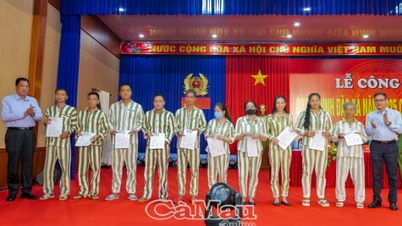
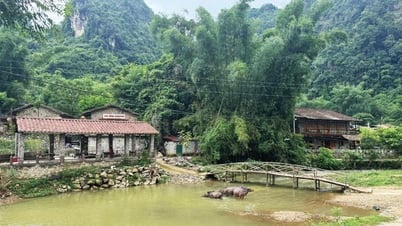
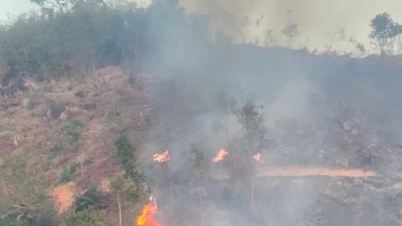
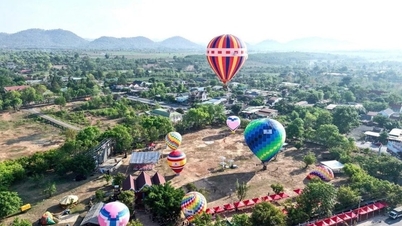







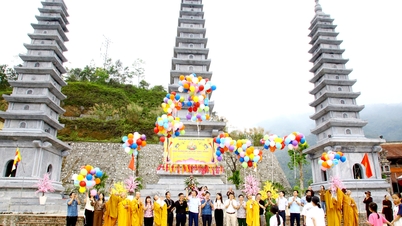


![[Photo] Binh Thuan organizes many special festivals on the occasion of April 30 and May 1](https://vphoto.vietnam.vn/thumb/1200x675/vietnam/resource/IMAGE/2025/5/1/5180af1d979642468ef6a3a9755d8d51)
![[Photo] "Lovely" moments on the 30/4 holiday](https://vphoto.vietnam.vn/thumb/1200x675/vietnam/resource/IMAGE/2025/5/1/26d5d698f36b498287397db9e2f9d16c)

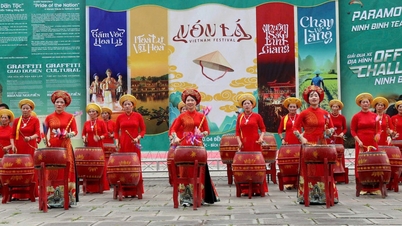

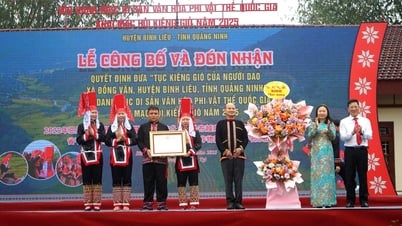





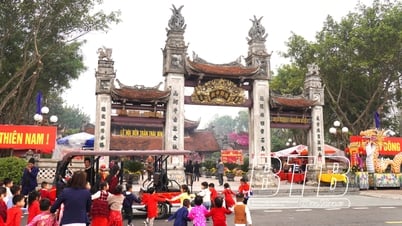



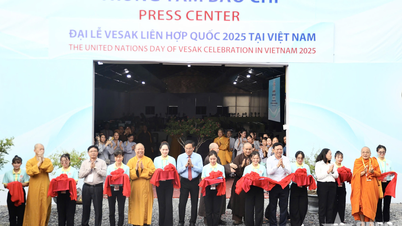



















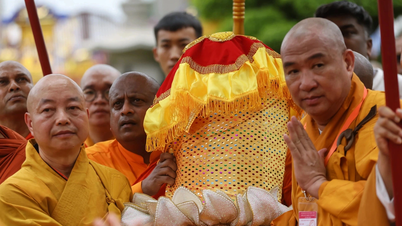




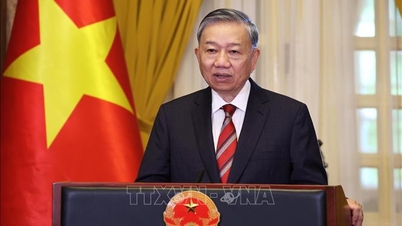











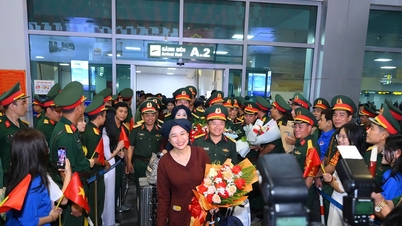



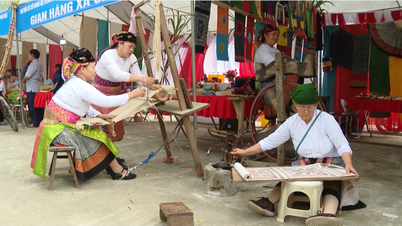
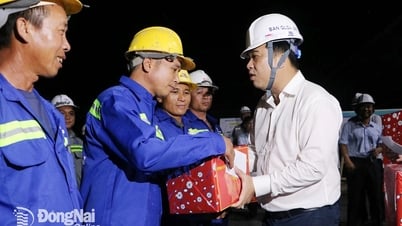

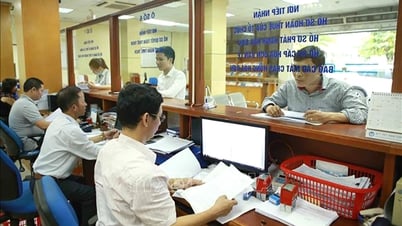





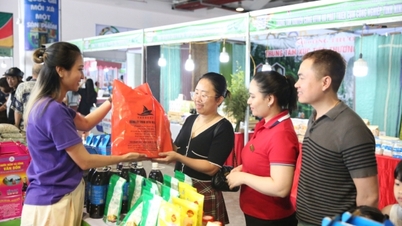



Comment (0)